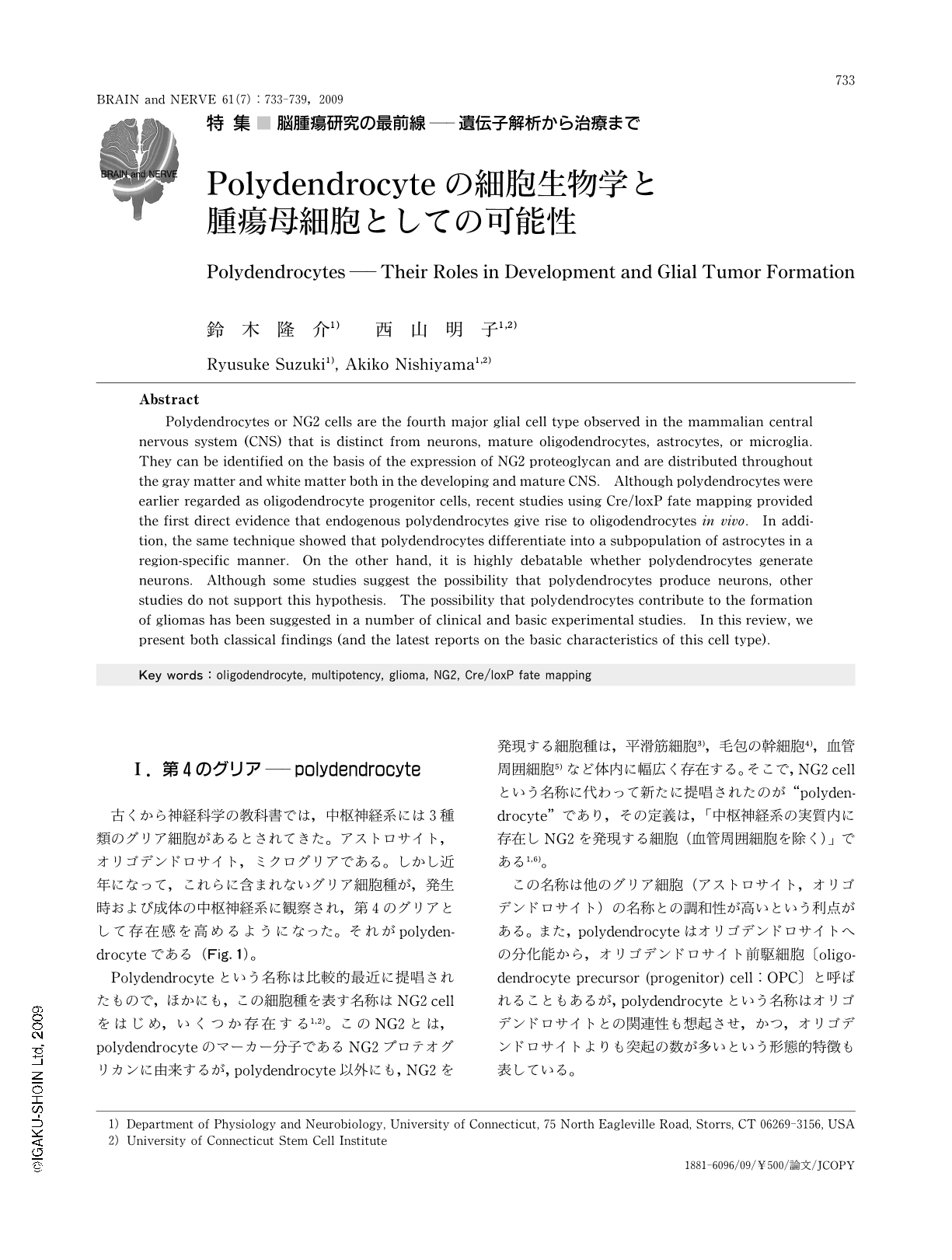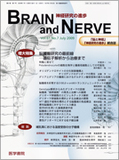Japanese
English
- 有料閲覧
- Abstract 文献概要
- 1ページ目 Look Inside
- 参考文献 Reference
Ⅰ.第4のグリア―polydendrocyte
古くから神経科学の教科書では,中枢神経系には3種類のグリア細胞があるとされてきた。アストロサイト,オリゴデンドロサイト,ミクログリアである。しかし近年になって,これらに含まれないグリア細胞種が,発生時および成体の中枢神経系に観察され,第4のグリアとして存在感を高めるようになった。それがpolydendrocyteである(Fig.1)。
Polydendrocyteという名称は比較的最近に提唱されたもので,ほかにも,この細胞種を表す名称はNG2 cellをはじめ,いくつか存在する1,2)。このNG2とは,polydendrocyteのマーカー分子であるNG2プロテオグリカンに由来するが,polydendrocyte以外にも,NG2を発現する細胞種は,平滑筋細胞3),毛包の幹細胞4),血管周囲細胞5)など体内に幅広く存在する。そこで,NG2 cellという名称に代わって新たに提唱されたのが“polydendrocyte”であり,その定義は,「中枢神経系の実質内に存在しNG2を発現する細胞(血管周囲細胞を除く)」である1,6)。
Abstract
Polydendrocytes or NG2 cells are the fourth major glial cell type observed in the mammalian central nervous system (CNS) that is distinct from neurons,mature oligodendrocytes,astrocytes,or microglia. They can be identified on the basis of the expression of NG2 proteoglycan and are distributed throughout the gray matter and white matter both in the developing and mature CNS. Although polydendrocytes were earlier regarded as oligodendrocyte progenitor cells,recent studies using Cre/loxP fate mapping provided the first direct evidence that endogenous polydendrocytes give rise to oligodendrocytes in vivo. In addition,the same technique showed that polydendrocytes differentiate into a subpopulation of astrocytes in a region-specific manner. On the other hand,it is highly debatable whether polydendrocytes generate neurons. Although some studies suggest the possibility that polydendrocytes produce neurons,other studies do not support this hypothesis. The possibility that polydendrocytes contribute to the formation of gliomas has been suggested in a number of clinical and basic experimental studies. In this review,we present both classical findings (and the latest reports on the basic characteristics of this cell type).

Copyright © 2009, Igaku-Shoin Ltd. All rights reserved.


